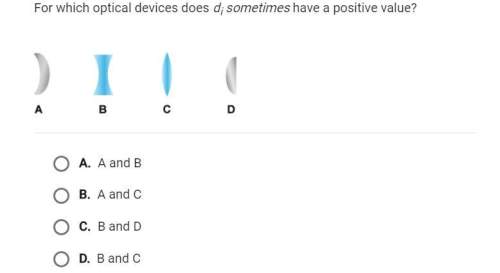
Physics, 26.12.2021 09:30 rockinrosh12
Three forces acting on an object are given by F1 = (−2.00 i + 2.00 j) N, F2 = (5.00 i − 3.00 j) N, and F3 = (−45.0 i) N. The object experiences an acceleration of magnitude 3.75 m/s2.
i. What is the direction of the acceleration?
ii. What is the mass of the object?
iii. If the object is initially at rest, what is its speed after 10.0 s?
iv. What are the velocity components of the object after 10.0 s?

Answers: 1


Other questions on the subject: Physics

Physics, 21.06.2019 19:50, nicky123415
An object is dropped from a tower, 400 ft above the ground. the object's height above ground t seconds after the fall is s(t)equals400 minus 16 t squared. determine the velocity and acceleration of the object the moment it reaches the ground. the velocity of the object the moment it reaches the ground is nothing ft/s.
Answers: 1

Physics, 21.06.2019 20:20, pamelperezz26
Ateam of astronauts is on a mission to land on and explore a large asteroid. in addition to collecting samples and performing experiments, one of their tasks is to demonstrate the concept of the escape speed by throwing rocks straight up at various initial speeds. with what minimum initial speed vesc will the rocks need to be thrown in order for them never to "fall" back to the asteroid? assume that the asteroid is approximately spherical, with an average density p 3.84 x108 g/m3 and volume v 2.17 x 1012 m3 recall that the universal gravitational constant is g 6.67 x 10-11 n m2/kg2
Answers: 2

Physics, 22.06.2019 10:00, jonlandis6
Need people build a dam to create a reservoir that supplies water a nearby city needs. describe two ways this action will likely affect the water cycle in the local environment. (5 points) worth 20 points
Answers: 1

Physics, 22.06.2019 12:30, shotocaffe
What is the power rating of the lightbulb if 3.0 a flow through it when connected to a 15 v battery
Answers: 1
You know the right answer?
Three forces acting on an object are given by F1 = (−2.00 i + 2.00 j) N, F2 = (5.00 i − 3.00 j) N, a...
Questions in other subjects:

Health, 14.04.2020 19:39





Physics, 14.04.2020 19:40


Mathematics, 14.04.2020 19:40





